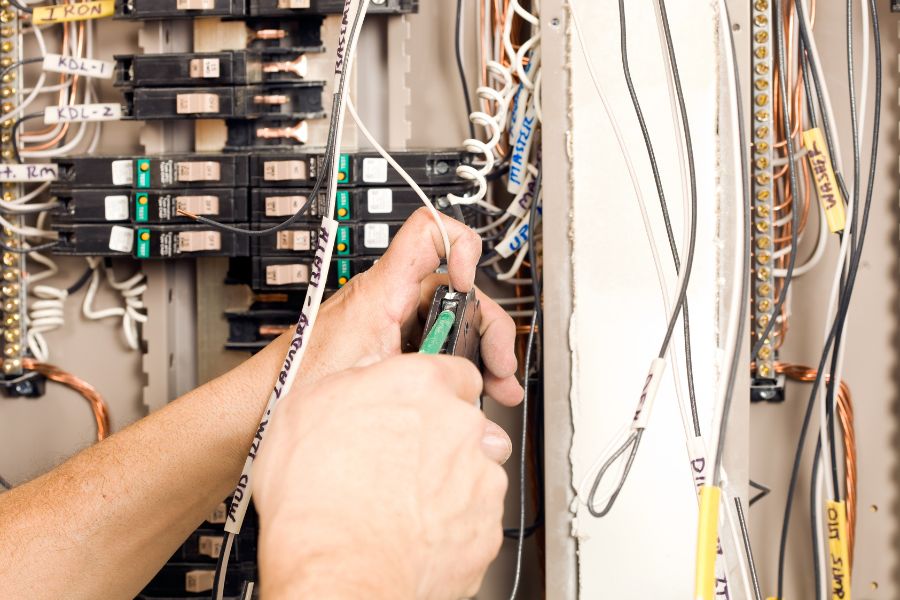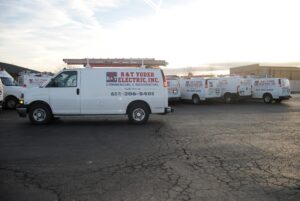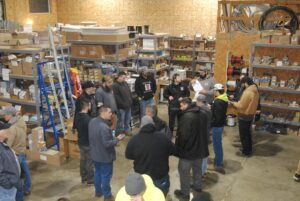
Tucked away in a forgotten corner of your home, the electric panel quietly powers your world. From your morning coffee machine to your evening Netflix binge, it distributes electricity with unassuming precision. But like all hardworking heroes, it occasionally falters—and when it does, the consequences can be more than just an inconvenience.
A malfunctioning electric panel isn’t merely an annoyance; it’s a potential hazard. Left unchecked, it can cause power outages, damage appliances, or even ignite electrical fires. Recognizing the signs of trouble early can save you from costly repairs, damaged equipment, and compromised safety. Let’s delve into the most common indicators that your panel needs attention and how professional electric panel repair services can restore order to your home’s power ecosystem.
1. Frequent Circuit Breaker Trips
Circuit breakers are designed to trip when circuits become overloaded or when electrical faults occur. An occasional trip is normal; it’s the panel’s way of protecting your home from danger. But if you’re constantly trekking to the breaker box, something’s amiss.
Why This Happens:
- Overloaded Circuits: Increased demand from modern appliances can overwhelm older panels.
- Short Circuits: Damaged wiring can cause currents to deviate from their intended paths.
- Ground Faults: When live wires touch grounded surfaces, safety mechanisms trigger a trip.
Real-Life Scenario:
Imagine plugging in your new espresso machine only for the lights to flicker and the breaker to trip. If your panel can’t handle routine appliances, it’s crying out for repair.
2. Burning Smell or Scorched Marks
Electricity, when harnessed correctly, is silent and odorless. A burning smell near your panel, however, signals imminent danger. Heat buildup from overloaded circuits or deteriorating wiring can ignite insulation, creating a potential fire risk.
Causes of Overheating Panels:
- Loose or corroded connections
- Overloaded circuits due to increased household power demands
- Faulty circuit breakers that fail to trip when necessary
Warning:
If you notice discoloration around the panel or detect a faint burning odor, shut off the power and call a professional immediately. Ignoring this sign can lead to catastrophic outcomes.
3. Flickering or Dimming Lights
Lights should brighten or dim at your command—not of their own volition. If your lighting resembles a haunted house attraction, it’s often a symptom of underlying panel issues.
Common Culprits:
- Loose connections within the panel
- Inadequate power distribution to circuits
- Aging components struggling to handle modern electrical loads
Example:
If your kitchen lights dim every time the microwave runs, your panel might lack sufficient capacity or have deteriorating wiring that needs immediate repair.
4. Warm or Hot Panel Surface
Your electric panel should never feel warm to the touch. If it does, excessive heat from overloaded circuits, worn components, or defective breakers may be to blame. Heat can damage wiring insulation, increasing the risk of electrical fires.
Potential Causes:
- Loose wiring connections causing arcing
- Breakers that fail to trip under load
- Panels unable to manage the home’s growing energy demands
Test:
Gently place your hand on the panel’s exterior. If it’s warm, contact an electrician without delay. This symptom indicates a high likelihood of internal issues.
5. Buzzing or Crackling Noises
Electricity should flow silently behind your walls. If you hear buzzing, crackling, or humming sounds near the panel, it’s a clear sign of trouble. These noises often point to electrical arcing—a phenomenon where electricity jumps through gaps in connections.
Underlying Issues:
- Loose or damaged wires
- Malfunctioning circuit breakers
- Corroded panel components
Important:
Arcing is a primary cause of electrical fires. Don’t dismiss unusual sounds as harmless quirks.
Outdated or Obsolete Electrical Panels
Age isn’t kind to electric panels. Many homes still operate with panels installed decades ago, designed for an era when households had fewer gadgets and appliances. Old panels may lack modern safety features, handle insufficient amperage, or use outdated technology like screw-in fuses.
Obsolete Panels to Watch For:
- Federal Pacific Electric (FPE): Known for breakers that fail to trip when necessary.
- Zinsco Panels: Prone to melting and internal arcing.
- Fuse Boxes: Outdated systems with replaceable fuses instead of modern circuit breakers.
Modern Solution:
Upgrading to a 200-amp panel ensures your home can safely handle contemporary energy demands.
Appliances Not Running at Full Power
If your appliances seem sluggish—like a dryer taking twice as long or a refrigerator that struggles to maintain temperature—your panel might be underpowered or malfunctioning.
🛠️ Why This Happens:
- Overloaded circuits affecting power distribution
- Voltage drops due to aging infrastructure
- Misaligned or damaged breakers
Insight:
Modern appliances often require dedicated circuits. A panel upgrade or repair can restore full functionality and efficiency.
The Dangers of Neglecting Electric Panel Issues
Ignoring signs of panel distress can have dire consequences. Electrical panels are your home’s first line of defense against power surges, overloads, and short circuits. When compromised, that defense crumbles.
Potential Consequences:
- Electrical Fires: Faulty panels cause thousands of household fires annually.
- Appliance Damage: Power surges from faulty panels can fry expensive electronics.
- Electric Shock: Damaged wiring poses a significant risk of shock during appliance use.
Statistic: According to the National Fire Protection Association (NFPA), electrical distribution systems are the third leading cause of residential fires in the U.S.
How Professional Electric Panel Repair Can Help
Professional repair services don’t just fix immediate issues—they fortify your home’s electrical infrastructure for the future. Here’s what our expert technicians provide:
1. Comprehensive Diagnostics
We use advanced tools to assess your panel’s condition, identifying hidden problems that could lead to future malfunctions.
2. Component Replacement
From corroded wires to outdated breakers, we replace compromised components with high-quality, code-compliant materials.
3. Circuit Optimization
Our team ensures circuits are evenly distributed, reducing overload risks and enhancing energy efficiency.
4. Code Compliance
Electrical codes evolve over time. We update your system to meet current safety standards, protecting you from legal or insurance complications.
Maintaining Your Electric Panel: Proactive Tips
Routine maintenance can significantly extend your panel’s lifespan and performance.
- Visual Inspections: Check for scorch marks, discoloration, or unusual smells.
- Breaker Tests: Manually trip breakers annually to verify functionality.
- Professional Checkups: Schedule a professional inspection every 3-5 years.
- Load Management: Avoid plugging high-demand appliances into the same circuit.
When to Repair vs. When to Replace
Repairs can address many panel issues, but sometimes replacement is the more prudent choice.
Opt for Repair If:
- Damage is isolated to a single circuit or component.
- The panel is under 15 years old.
- Breakers trip infrequently and without signs of overheating.
Consider Replacement If:
- The panel is outdated (fuse-based or brand-known for defects).
- Electrical demands have increased significantly (e.g., EV chargers, home additions).
- Repairs become frequent, signaling systemic deterioration.
Rule of Thumb: If repairs exceed 50% of replacement costs, a new panel is usually the wiser investment.
FAQ Section
1. How long does electric panel repair take?
Repairs typically take 2-4 hours, depending on the complexity and extent of the damage.
2. Is it safe to repair an electric panel myself?
No. Electrical work requires specialized knowledge and equipment. DIY attempts can lead to electrocution, fire hazards, and code violations.
3. What’s the lifespan of an electric panel?
Modern panels last 25-40 years with proper maintenance. Older models may fail sooner, especially if usage demands increase.
4. How can I tell if my panel is overloaded?
Frequent breaker trips, dimming lights, and warm surfaces are classic indicators.
5. Does my insurance cover panel repairs?
Coverage varies. Panels damaged by electrical surges or natural events may be covered, while routine wear-and-tear is typically excluded.
A faulty electric panel isn’t just an inconvenience—it’s a ticking time bomb that jeopardizes your home’s safety and efficiency. Don’t wait until flickering lights turn into a full-blown outage or worse, an electrical fire.
Our expert electric panel repair services restore your home’s power reliability, ensuring seamless operation and uncompromised safety. From diagnostics to repairs and upgrades, we handle it all with precision and care.







